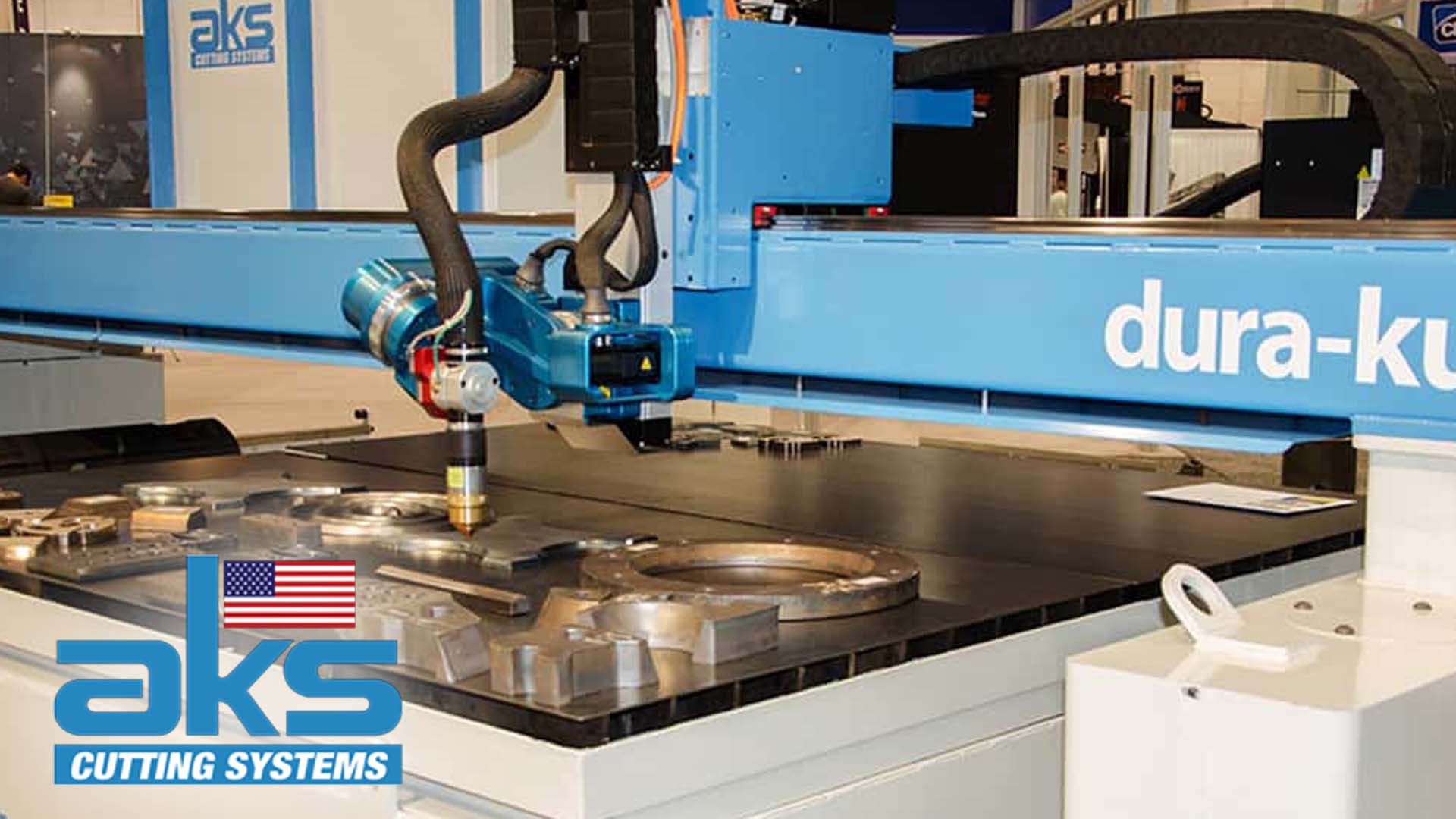We often get the question, which machine should I buy — a plasma or waterjet?
By Miles Mooneyham
We hear it frequently from customers trying to navigate the many advantages offered by each cutting technology. The answer depends on a variety of factors ranging from the types of materials you’re cutting to precision requirements.
The key is understanding the nuances of each technology and mapping them to your customers’ own unique requirements. As a starting point, we’ve put together the following primer to help you better understand the capability parameters of plasma and waterjet technology.
Plasma Cutting
Plasma cutting uses an electrical channel of superheated, electrically ionized gas, or plasma, which then melts the material to cut it. Ideal applications for plasma include cutting steel, brass and copper and other conductive metals. It’s possible to cut stainless steel and aluminum with a plasma; however, it’s not ideal due to the reflection of the torch and low melting point of the plasma cutter.
Plasma cutters – like the AKS tru-kut, accu-kut or dura-kut systems – are frequently used by fabrication shops, automotive repair and restoration, industrial construction, and salvage and scrapping operations. With its high speed, precision cuts and low cost, plasma cutting is used by large-scale industrial CNC applications down to small hobbyist shops.
Plasma is ideal for cutting larger parts, typically ranging from 1 inch up to 20 – 30 feet, with accuracies ranging from +- .15-.020. If you’re looking for general plate cutting, a plasma would be faster and less expensive to operate than a waterjet.
There are, however, a few limitations. Plasma cutting is less accurate than waterjets and may require secondary processing to remove heat affected material and flattening to eliminate distortion from the heat. Depending on the job, the plasma machine may require additional setup changes.
Waterjet Cutting
Waterjets – such as AKS’s water-kut X2, water-kut x3 and water-kut x4 machines – cut by erosion, using a high-pressure stream of water that can cut virtually any material. Pure waterjets can quickly and accurately cut soft materials such as rubber, foam and other gasket material. Abrasive waterjets can cut almost any material over a very wide range of thicknesses including virtually all metals such as hardened tool steel, stainless steel, aluminum, copper and titanium; non-tempered glass, including multi-layer laminated safety glass; composites; laminates; stone; and most ceramics. Waterjets do not require any secondary processing due to the cold-cutting nature of the technology.
Since the cutting stream can be easily modified, waterjets can be used in nearly every industry including job shops, stone fabricators, aerospace companies and beyond. Waterjets are also ideal for cutting highly intricate parts as small as .030 inches to .050 inches, though the most common applications include parts from .500 inch to 2 – 3 feet. In terms of accuracy, a waterjet can cut a small ½-inch part at .001 or .002. Larger parts, such as 6 – 8 feet, can be cut with accuracies of +- .100.
Maintenance and Operating Costs
Waterjets are considered high maintenance when compared to other metal cutting machines. The process of pressuring and pumping the water wears out the high-pressure pump and nozzle, requiring replacement of parts on a regular basis. Alternatively, plasma machines require very little maintenance.
Operating costs vary greatly between the two machines. Plasma machines consist of electricity, water, compressed air, gasses, and consumable parts, and cost approximately $5 – $6 per hour to run. Waterjet machines require electricity, water, and consumable parts, with operating costs ranging from $20 – $30 per hour.
Operation Speed
The production rate of plasma and waterjet machines is determined by their cutting speeds. Waterjet tends to be the slowest (especially on thick materials), while plasma cuts faster.
Material Thickness
By nature of the plasma technology, plasma is limited to cutting about 2 inches of mild steel. In stainless steel, the plasma can typically cut up to 1 ½ inches. With a waterjet, however, material thickness is unlimited, though the cutting speed may vary, with thicker material taking longer.
Choosing between a plasma or waterjet cutting machine really boils down to your own customers’ needs, applications, productivity, tolerance, and operating costs. Talk to one of our experts to help determine the right solution for your shop.
